Holy smoke: Tom Dixon turns to the elements for Caesarstone pop-up
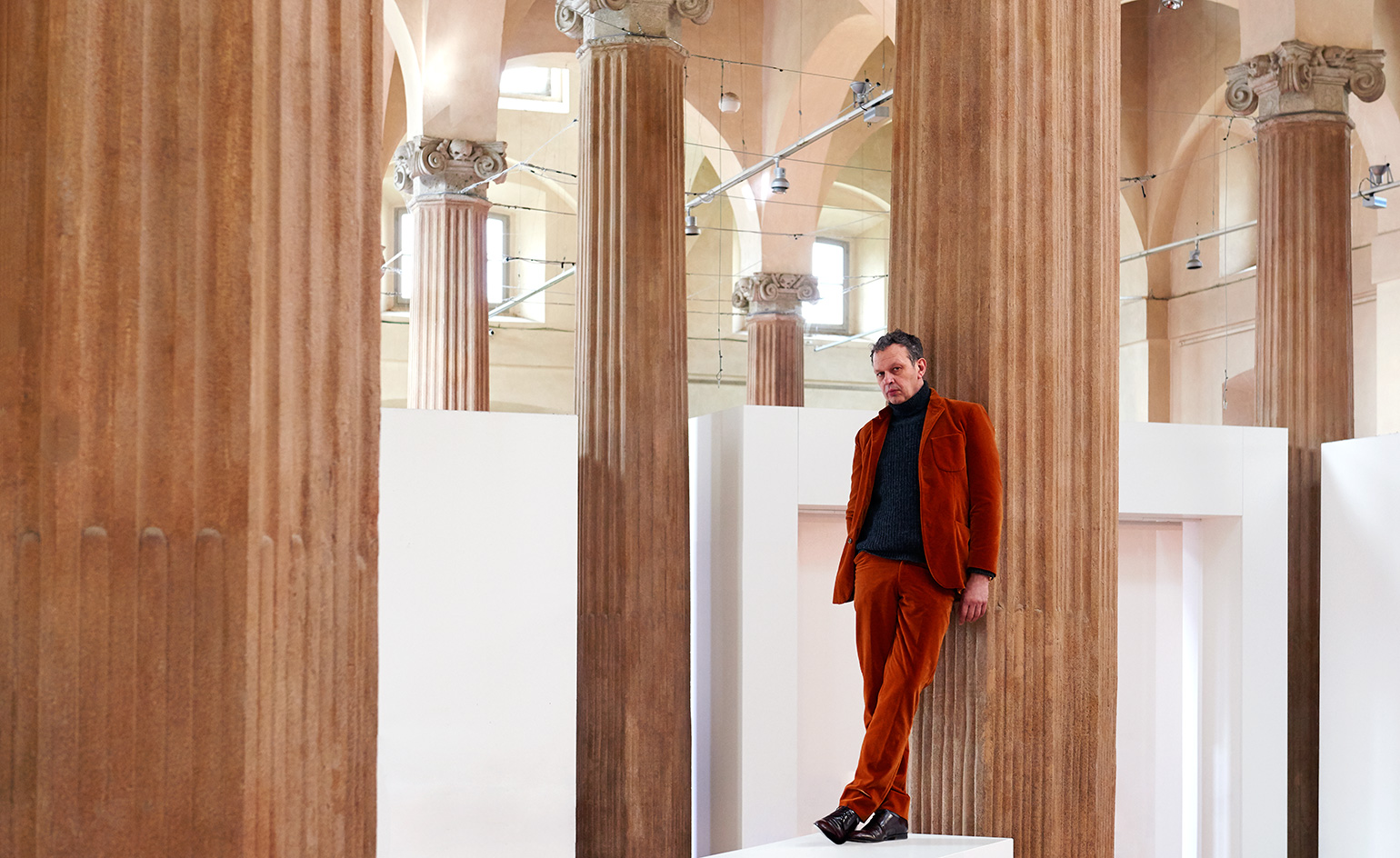
A flat synthetic stone surface is not the easiest of products to present imaginatively at a trade show. So it’s a testament to the talent of the team at quartz surface manufacturer Caesarstone that the global company’s recent series of impressively scaled exhibitions in Milan have all been showstoppers.
‘Engagement with architects and interior design is a major growth channel for Caesarstone,’ explains the brand’s CEO, Yos Shiran. ‘We need to create opportunities for them to experience and use the product in new and creative ways.’ Last year, Philippe Malouin installed a playful series of swings and planters made from the material within the neoclassical Palazzo Serbelloni; in 2014, Raw-Edges’ whimsical ‘Islands’ kitchen served up canapés and candyfloss to guests in Palazzo Clerici; and in 2013, Nendo created two large-scale installations, including a peaceful ‘stone garden’ in the courtyard at Palazzo Crivelli.
Now, promising to top all of these performances is Tom Dixon, who has partnered with the brand for this year’s Salone on a series of four kitchens that will be serving up themed cuisine at Rotonda della Besana, a deconsecrated church surrounded by a peaceful cloistered garden behind Milan’s Tribunale. ‘As it’s Eurocucina this year, I thought we might as well get cooking,’ says Dixon, who is no stranger to throwing ambitious culinary events; his own restaurant, Dock Kitchen, at his London HQ, has been running since 2009. ‘I’ve taken the restaurant a couple of times to Milan and it takes a lot of energy, so it’s good to have a partner who’s going to do it with us.’
Having already debuted one of the four Caesarstone kitchens at the Interior Design Show in Toronto, Dixon’s Salone showcase will see all four kitchens serving a temporary restaurant in the church’s domed centre. Made using Caesarstone quartz, each kitchen will boast an experimental design based around one of the four elements associated with medieval alchemy – water, fire, earth and air. ‘I like the idea of alchemy as a metaphor for design – where you’re turning base materials into gold – but in a kitchen it’s particularly relevant,’ he says, reflecting on his elemental theme. ‘You’re boiling stuff, charring stuff, there’s extraction going on, air’s being pumped into egg whites to make meringues, and everything ultimately comes from the earth. I like multiple reasons for using analogies.’
Four kitchens, four courses and four dining rooms spread out across the church’s cruciform layout will create a format that Dixon likens to a ‘global speed dating’ exercise, encouraging guests of all nationalities to mingle. ‘Each course will be served by a different kitchen in a different dining room, so you’ll have one course in one dining room before moving on to the next, where you’ll be confronted with a new guest,’ he explains. The menu comes courtesy of Francesca Sarti, of food design studio Arabeschi di Latte, and will feature dishes in keeping with the elemental theme. Planned delicacies include shaved ice drinks prepared in the water kitchen, marshmallows and candyfloss in the air kitchen, chicken cooked under a brick in the earth kitchen, and charred breads toasted in the fire kitchen. ‘Although, we’ve got to be a bit careful with flames inside a listed building,’ says Dixon.
Fitted out with Electrolux’s Grand Cuisine cooking systems, the monumental kitchens will be realised in colour palettes that match their individual theme, much like giant Caesarstone sample boards, each with their own ‘little quirks’, as Dixon puts it. The grey and white water kitchen, for instance, has jagged edges inspired by frozen ice, while the earth kitchen recalls ancient Roman aqueducts in earthy tones. In the fire kitchen, blackened beams and hints of gold are paired with black and dark grey quartz surfaces, and in the air kitchen, thin, vertically placed Caesarstone slabs and cut-outs will serve as cooking counters.
‘Caesarstone is usually just used to top things off, but by using it as structure and support material, we’ve come up with some slightly different conclusions,’ says Dixon. ‘They’re quite confident interventions in the room. I think all too often kitchens are kind of ghettoised to the corner with just a little breakfast bar – I don’t like the way kitchens always hug the walls.’
The new 2016 Tom Dixon collection of furniture and accessories will also be displayed across the space. This year’s pieces, spread across five ranges, have a special focus on raw materials, something that’s always been at the heart of Dixon’s design work. ‘What made me do design in the first place was that direct contact with stuff, and the idea of being able to transform something that’s formless into something desirable, something I still enjoy doing. It never loses its magic.’
The creation of a complete immersive experience in order to exhibit new work is, of course, nothing new for Dixon – Multiplex, his recent multi-sensory temporary department store at the Old Selfridges Hotel in London, was a great success, as was his series of shoppable installations and light shows built within an abandoned theatre during last year’s Salone. This natural knack for showmanship, he says, can be traced back to his love of music and performance.‘I love the idea that you’re demonstrating the stuff in action rather than it just sitting on a pedestal,’ he adds.
‘People travel a long way to Milan and they’re looking for sensation and excitement. A lot of people say how much better it used to be, but you’ve got to look on the positive side and what it means for our business; which is that because there’s more general interest and because people are seeing our stage as a place they can market a car or face cream, it’s good for all designers. So why not pander to that sensation-seeking and do something which will test out a few theories, a few ideas and entertain people? Maybe in the long run, facing up to the fact that this has partly become an entertainment industry is something worth looking at.’
As originally featured in the May 2016 edition of Wallpaper* (W*206)
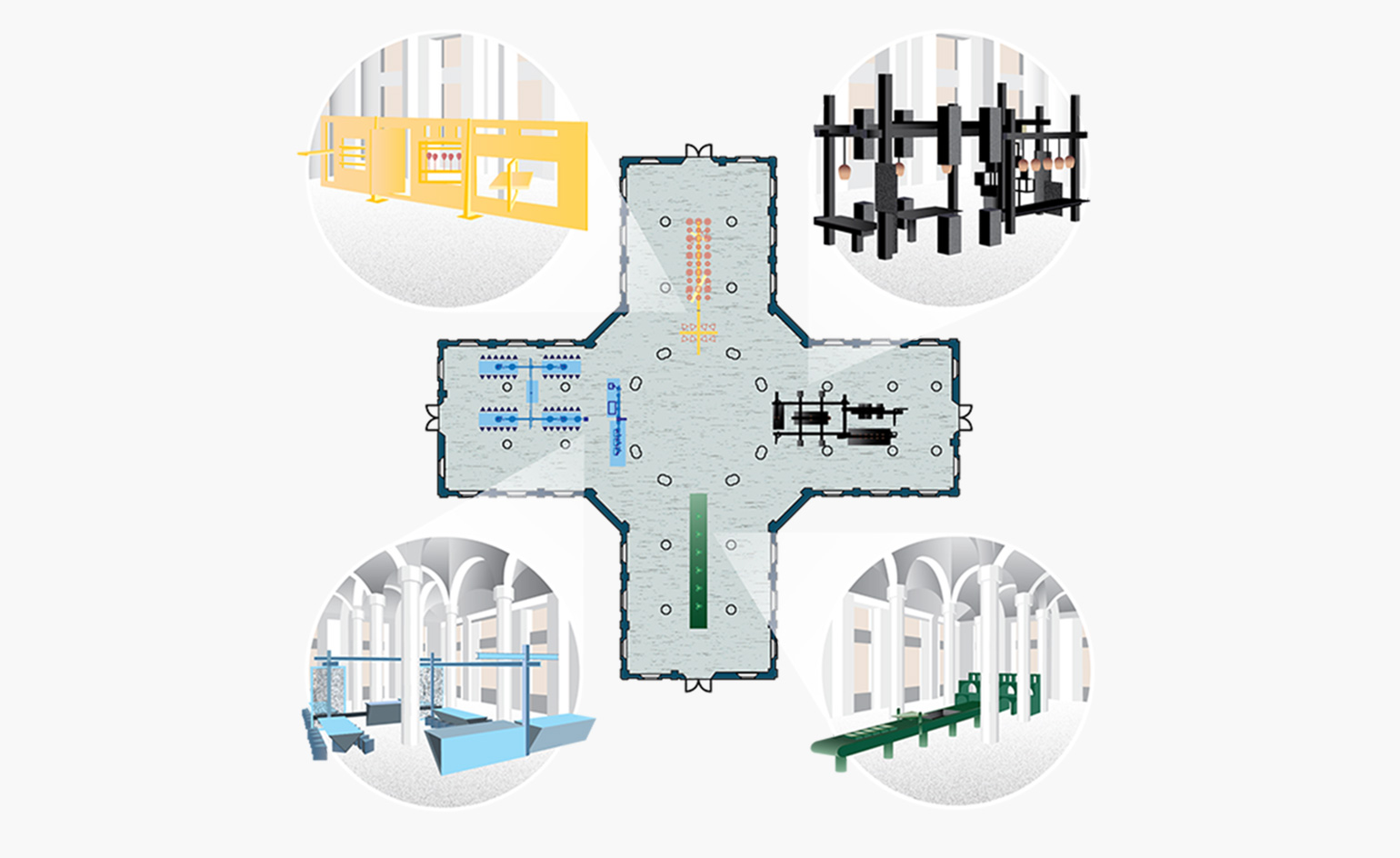
Dixon's restaurant is split into four zones. Pictured clockwise from top-left:
Air: Thin, vertically placed Caesarstone slabs and cut-outs will act as cooking counters for the dessert bar, where treats include meringue, whipped cream, marshmallows and candyfloss.
Fire: Blackened beams and hints of gold are paired with black and dark grey quartz surfaces, and food served will include charred breads and smoked cheese.
Earth: The earth kitchen recalls ancient Roman aqueducts in earthy tones, with ingredients – largely pulled from the ground – cooked under bricks or in hay boxes.
Water: The grey and white water kitchen has jagged edges inspired by frozen ice, and delicacies include shaved ice drinks, hot steaming broths and frozen vegetables
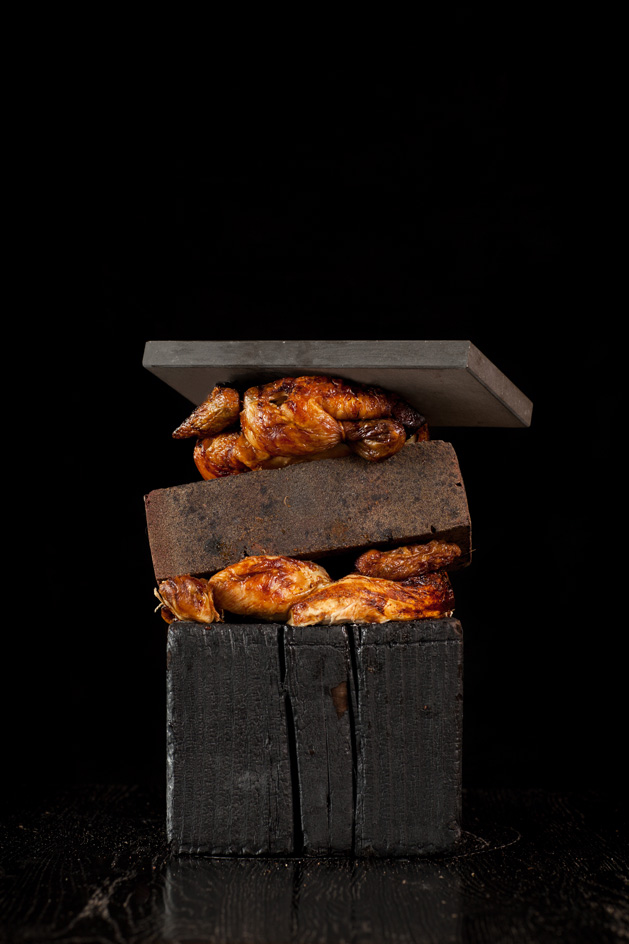
Chicken cooked under a brick in the earth kitchen
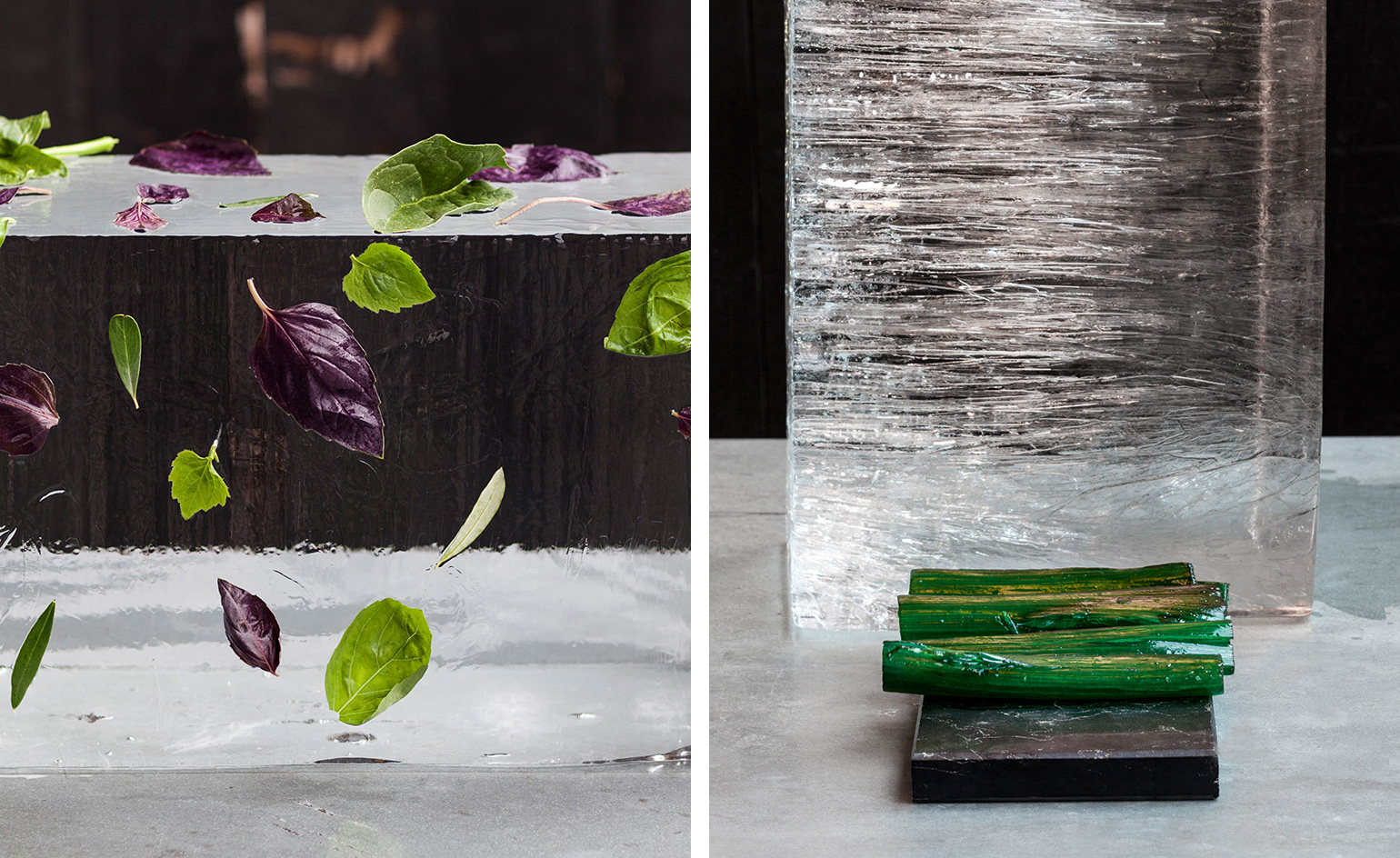
Frozen vegetables and frozen herbs, both in the water kitchen
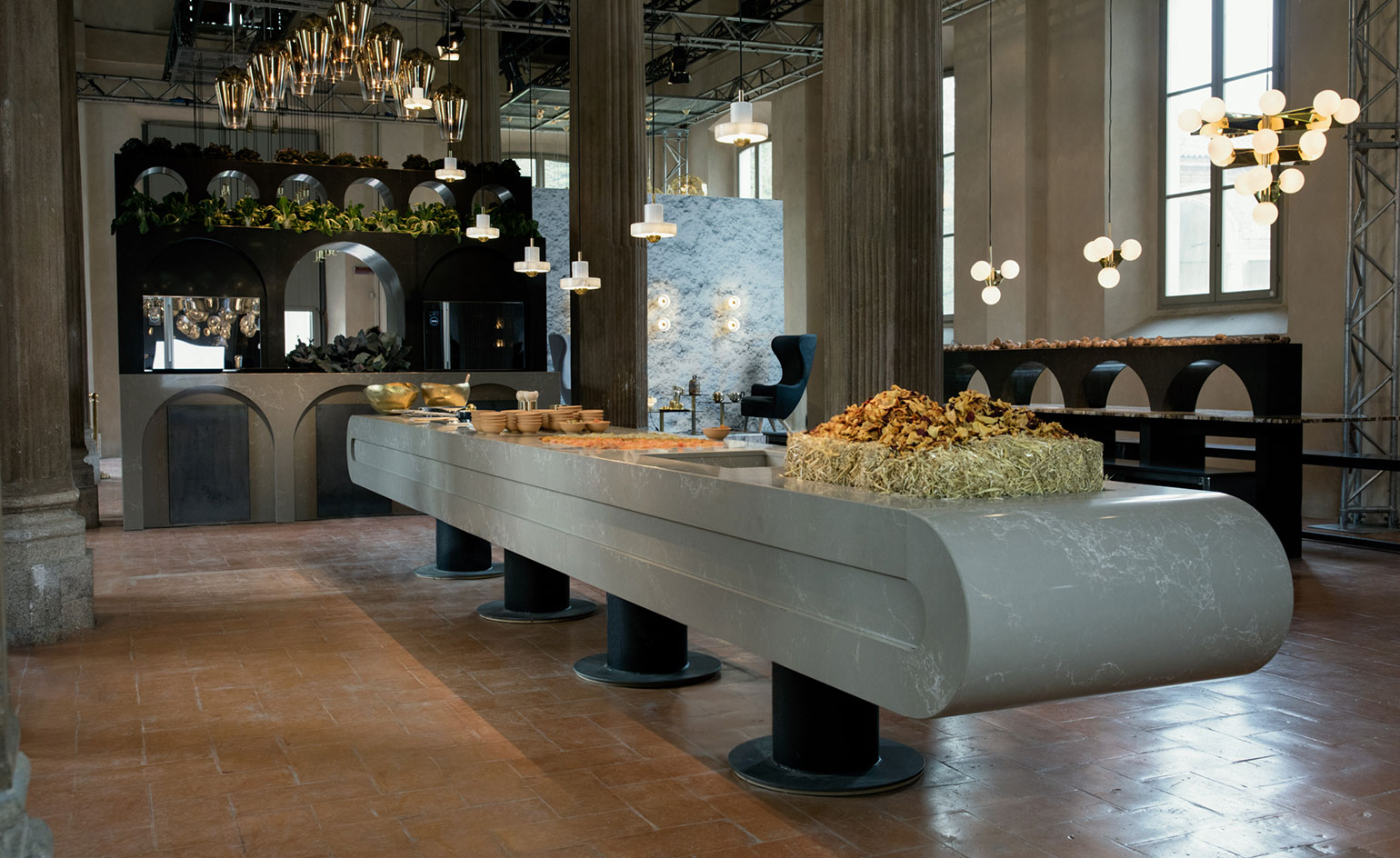
Dixon comments on the project, ‘They’re quite confident interventions in the room. I think all too often kitchens are kind of ghettoised to the corner.' 'I don’t like the way kitchens always hug the walls’. Pictured: the Earth Kitchen
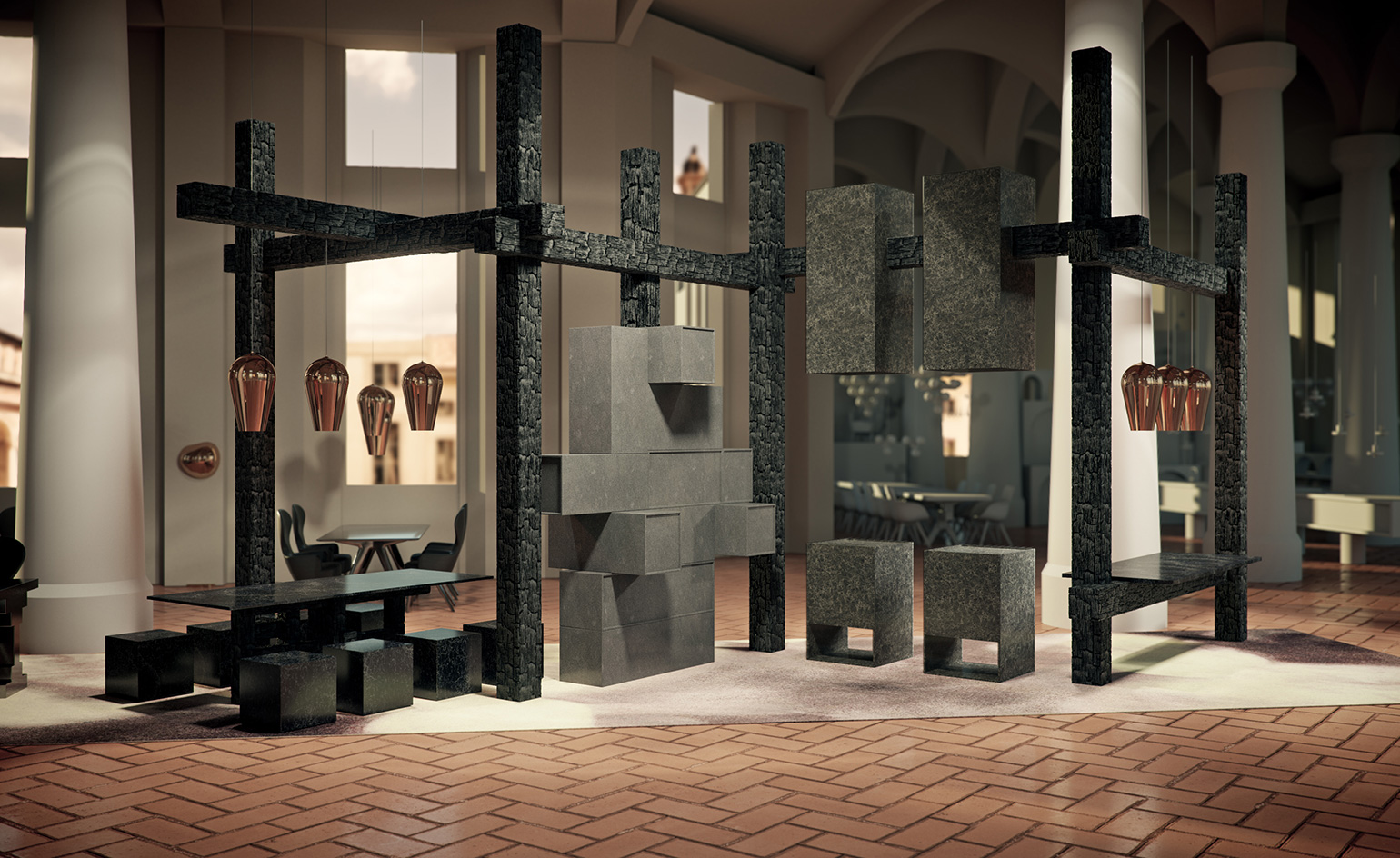
Tom Dixon's fire kitchen. Courtesy Caesarstone
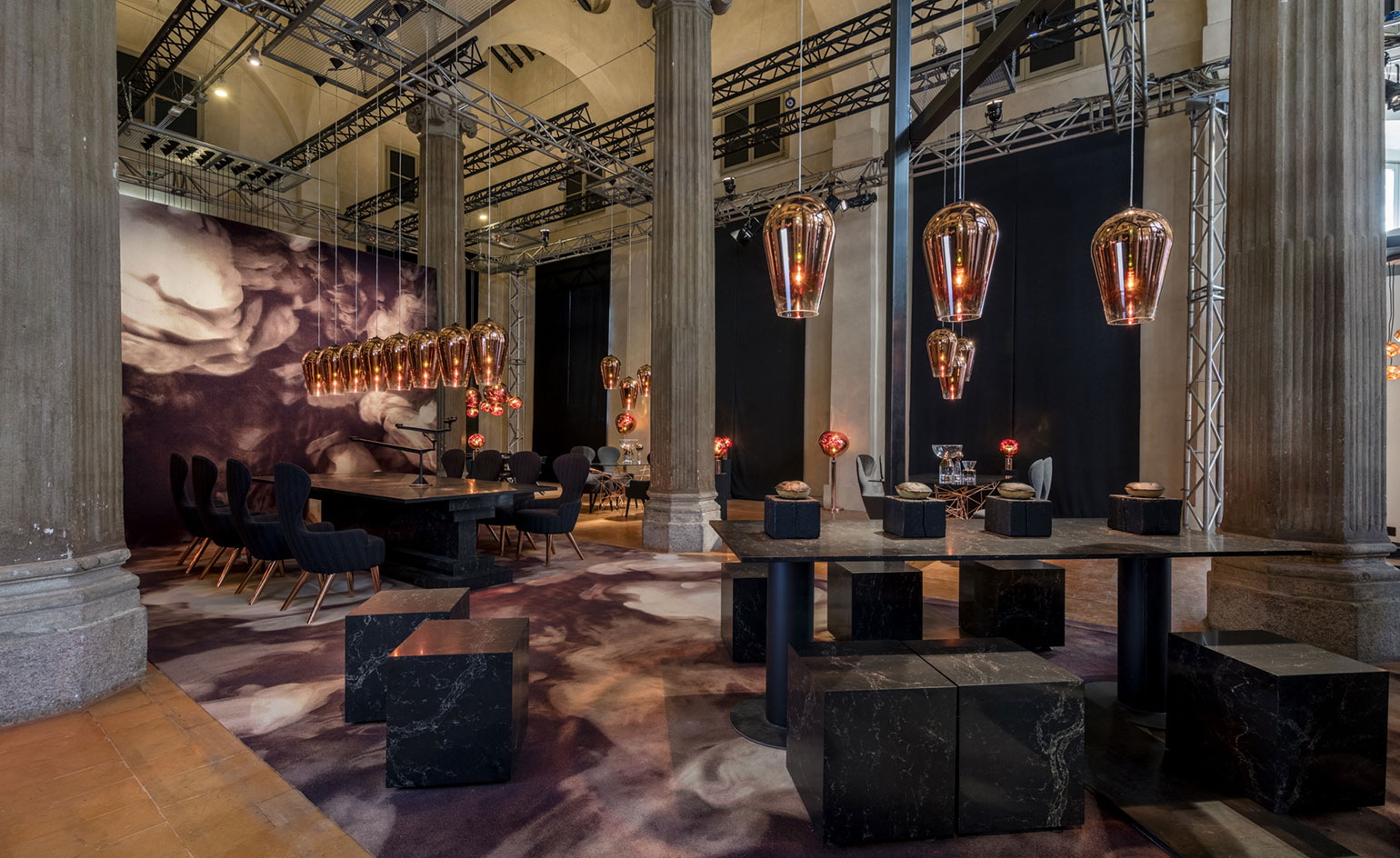
Dixon adds, ‘I like the idea of alchemy as a metaphor for design – where you’re turning base materials into gold – but in a kitchen it’s particularly relevant’. Pictured: The Fire Kitchen
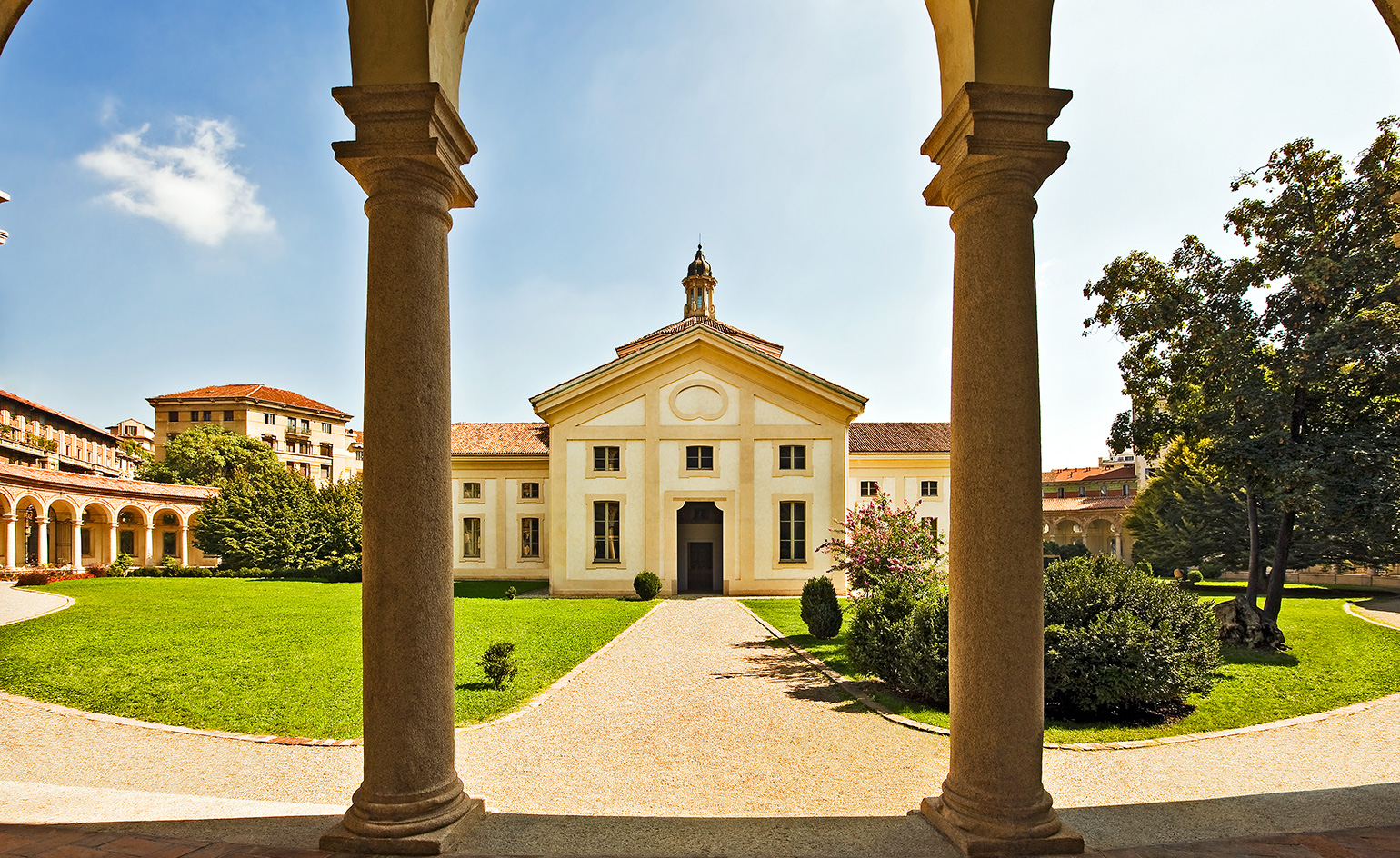
The beautiful grounds of the Rotonda Della Besana
INFORMATION
’The Restaurant’ by Caesarstone & Tom Dixon will be at MUBA from 12–17 April. For more information, visit Ceasarstone’s website and Tom Dixon’s website
Photography: Danilo Scarpati
ADDRESS
MUBA
via Enrico Besana 12
Milan
Receive our daily digest of inspiration, escapism and design stories from around the world direct to your inbox.
Ali Morris is a UK-based editor, writer and creative consultant specialising in design, interiors and architecture. In her 16 years as a design writer, Ali has travelled the world, crafting articles about creative projects, products, places and people for titles such as Dezeen, Wallpaper* and Kinfolk.
-
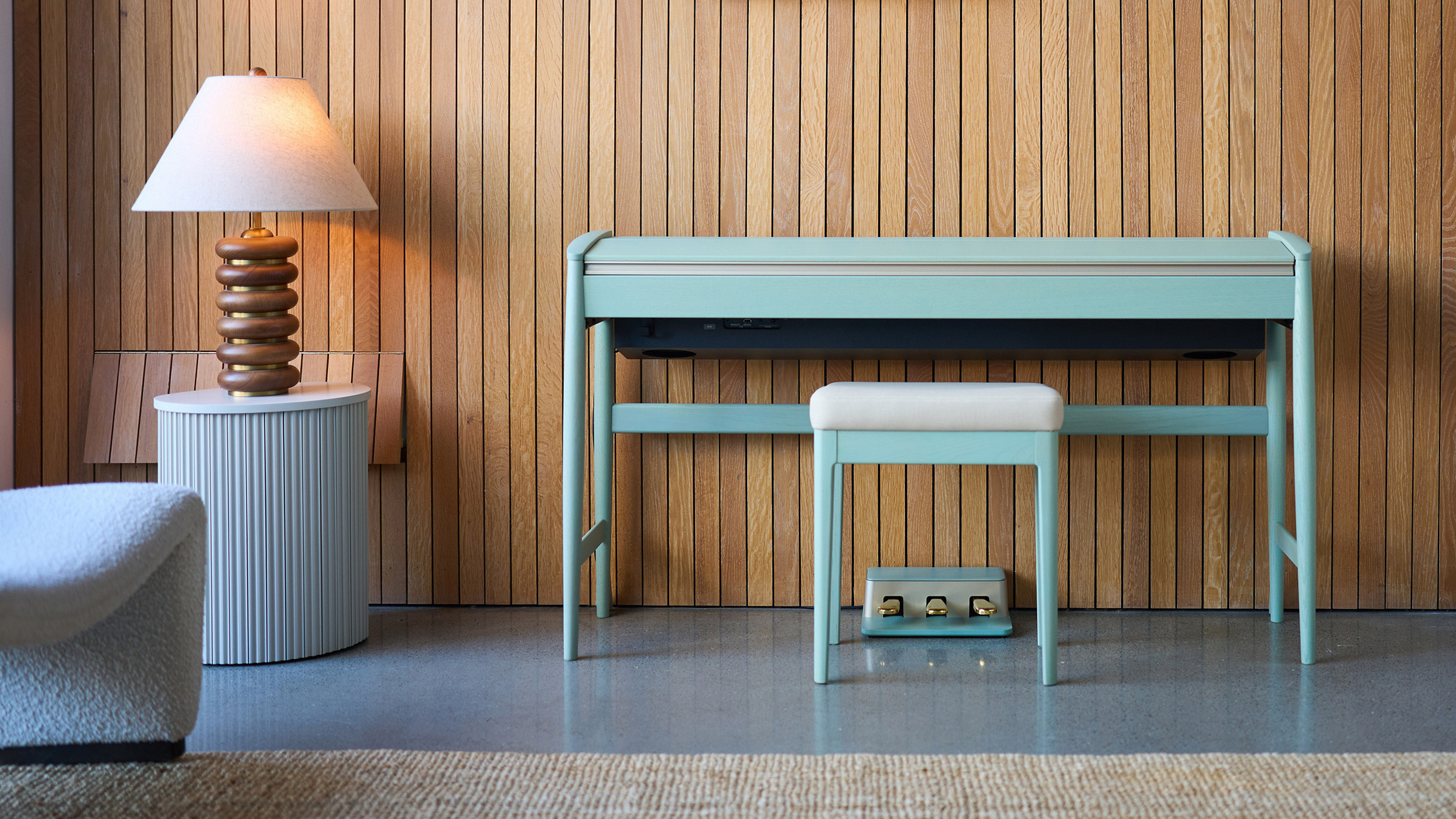 Roland and Karimoku expand their range of handcrafted Kiyola digital pianos
Roland and Karimoku expand their range of handcrafted Kiyola digital pianosThe new Roland KF-20 and KF-25 are the latest exquisitely crafted digital pianos from Roland, fusing traditional furniture-making methods with high-tech sound
-
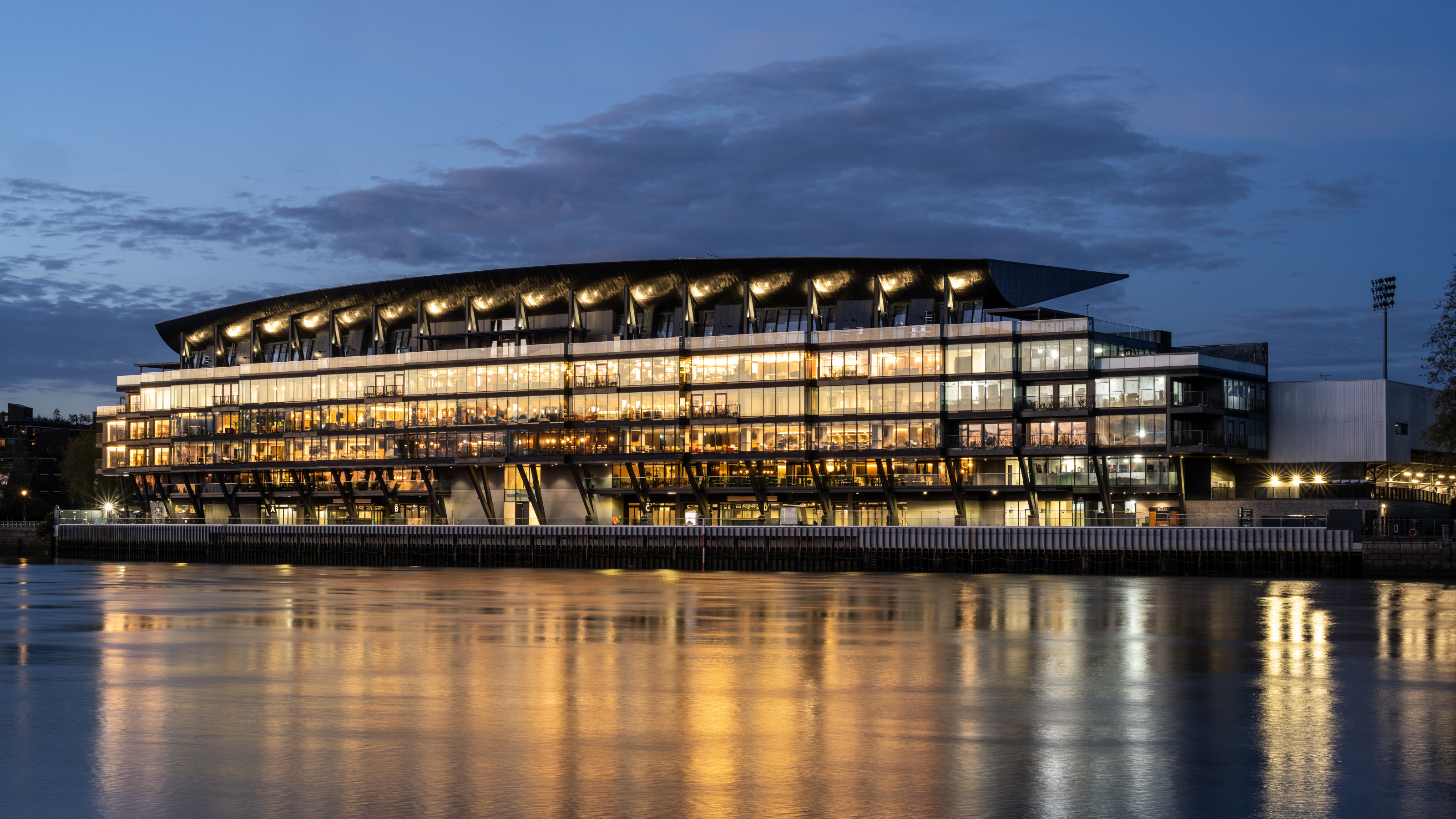 Fulham FC’s new Riverside Stand by Populous reshapes the match-day experience and beyond
Fulham FC’s new Riverside Stand by Populous reshapes the match-day experience and beyondPopulous has transformed Fulham FC’s image with a glamorous new stand, part of its mission to create the next generation of entertainment architecture, from London to Rome and Riyadh
-
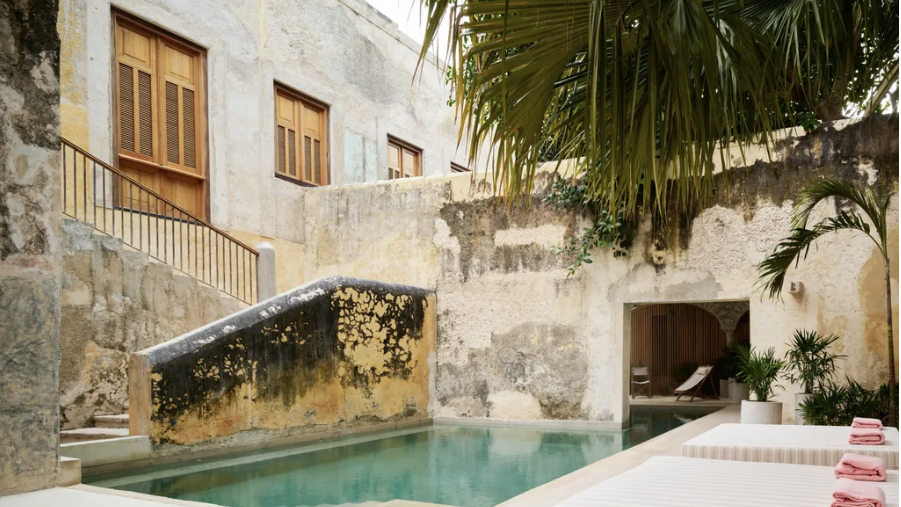 A contemporary Mexican hotel emerges from a 16th-century ruin in Mérida
A contemporary Mexican hotel emerges from a 16th-century ruin in MéridaA renovation project by Zeller & Moye, Mérida’s new Hotel Sevilla wears its architectural interventions lightly, mixing new brutalist elements into listed interiors and a palm-filled courtyard
-
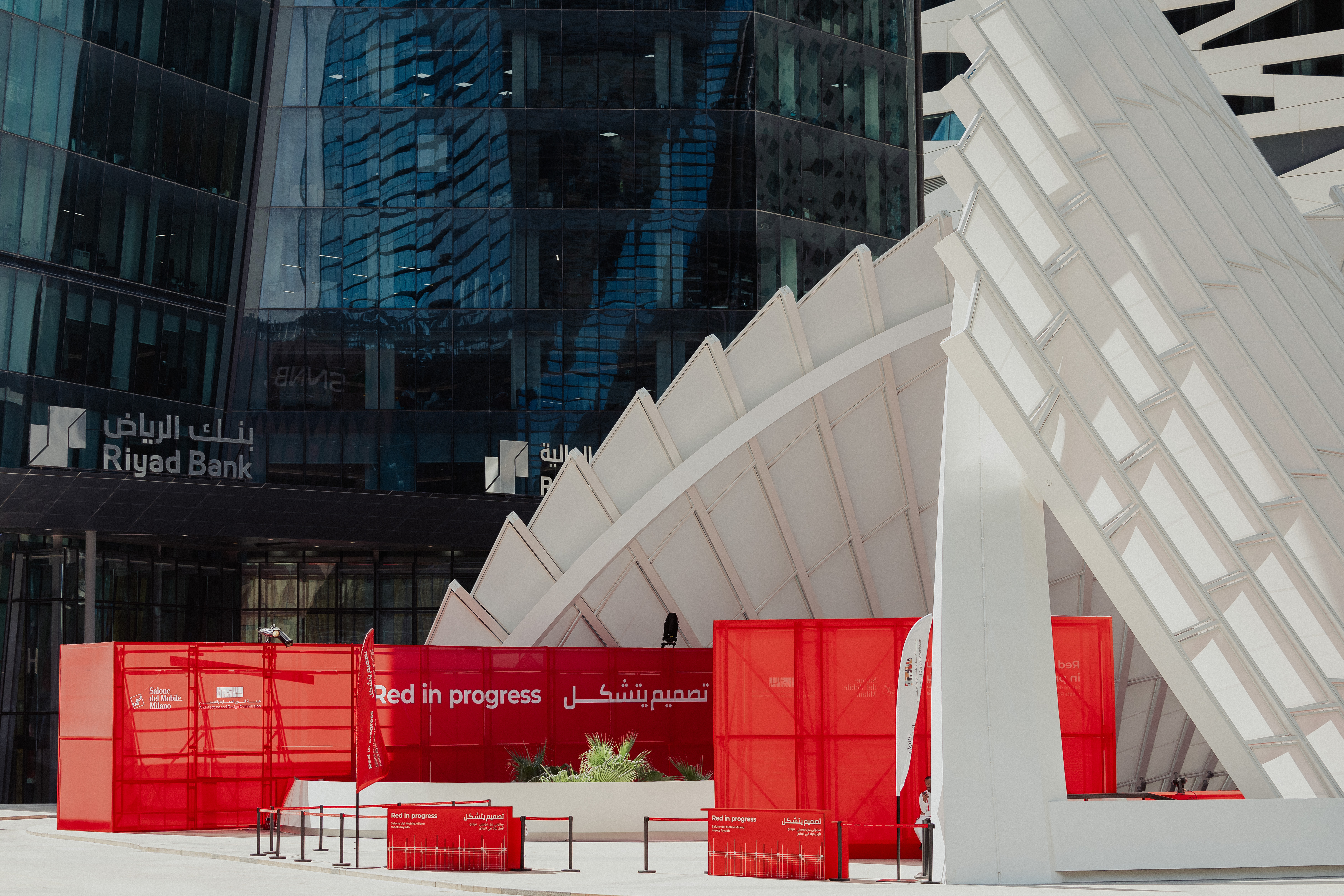 ‘Locally anchored and globally conversant’: Salone del Mobile debuts in Saudi Arabia
‘Locally anchored and globally conversant’: Salone del Mobile debuts in Saudi ArabiaSalone del Mobile lands in Riyadh (26-28 November 2025), bringing its creative and manufacturing know-how to one of the world’s fastest-growing markets and setting the stage for Italo-Saudi design relations
-
 Alcova 2026 locations include a Rationalist gem and an abandoned church
Alcova 2026 locations include a Rationalist gem and an abandoned churchAlcova returns for an 11th edition in 2026 (20-26 April), once again opening up two exclusive Milanese locations, the Baggio Military Hospital and Franco Albini's Villa Pestarini
-
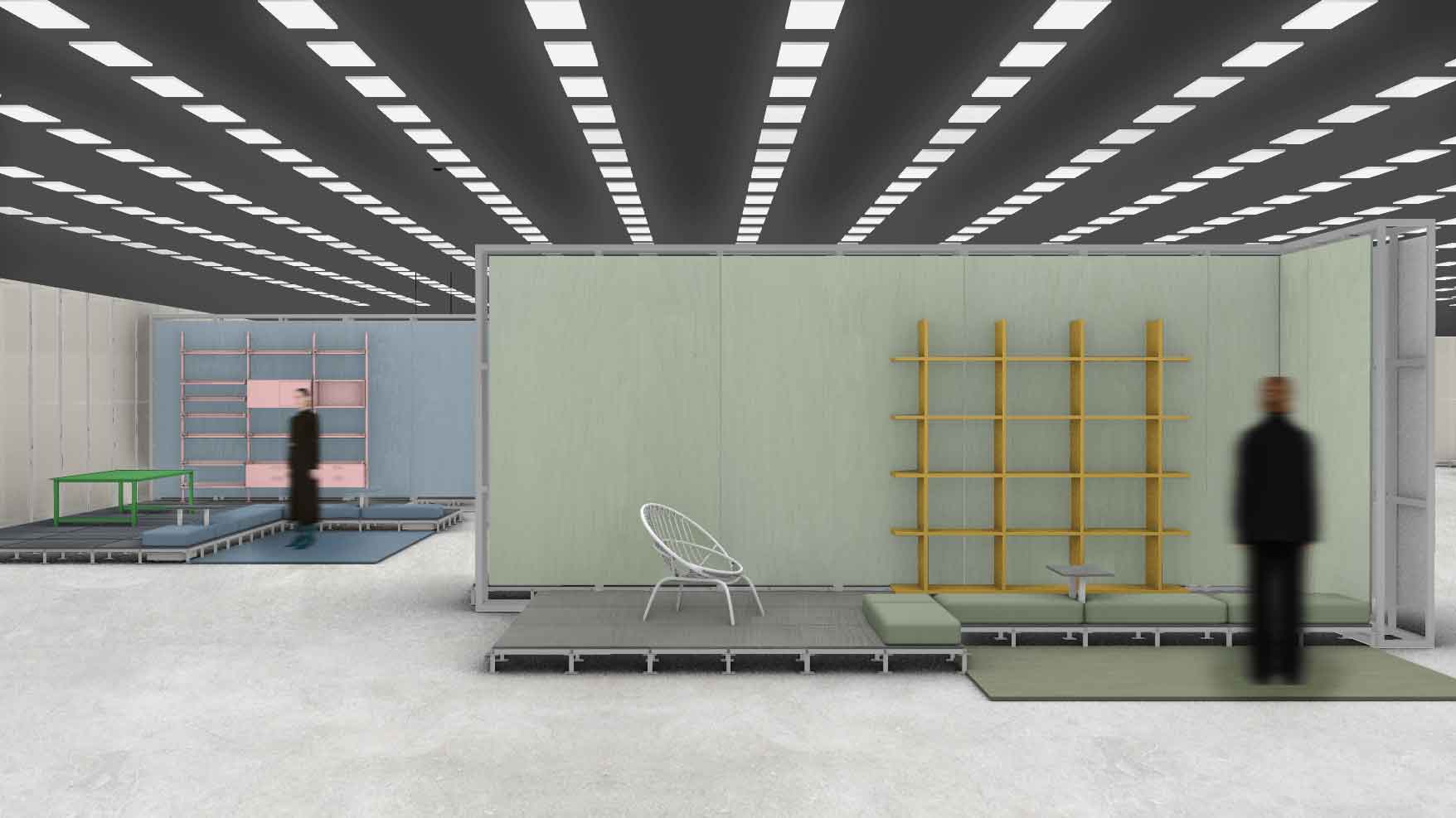 Salone del Mobile 2026 will embrace collectible design with Salone Raritas
Salone del Mobile 2026 will embrace collectible design with Salone RaritasSalone del Mobile has Salone Raritas, a new exhibition space at the fair (21-26 April 2026), curated by Annalisa Rosso and designed by Formafantasma
-
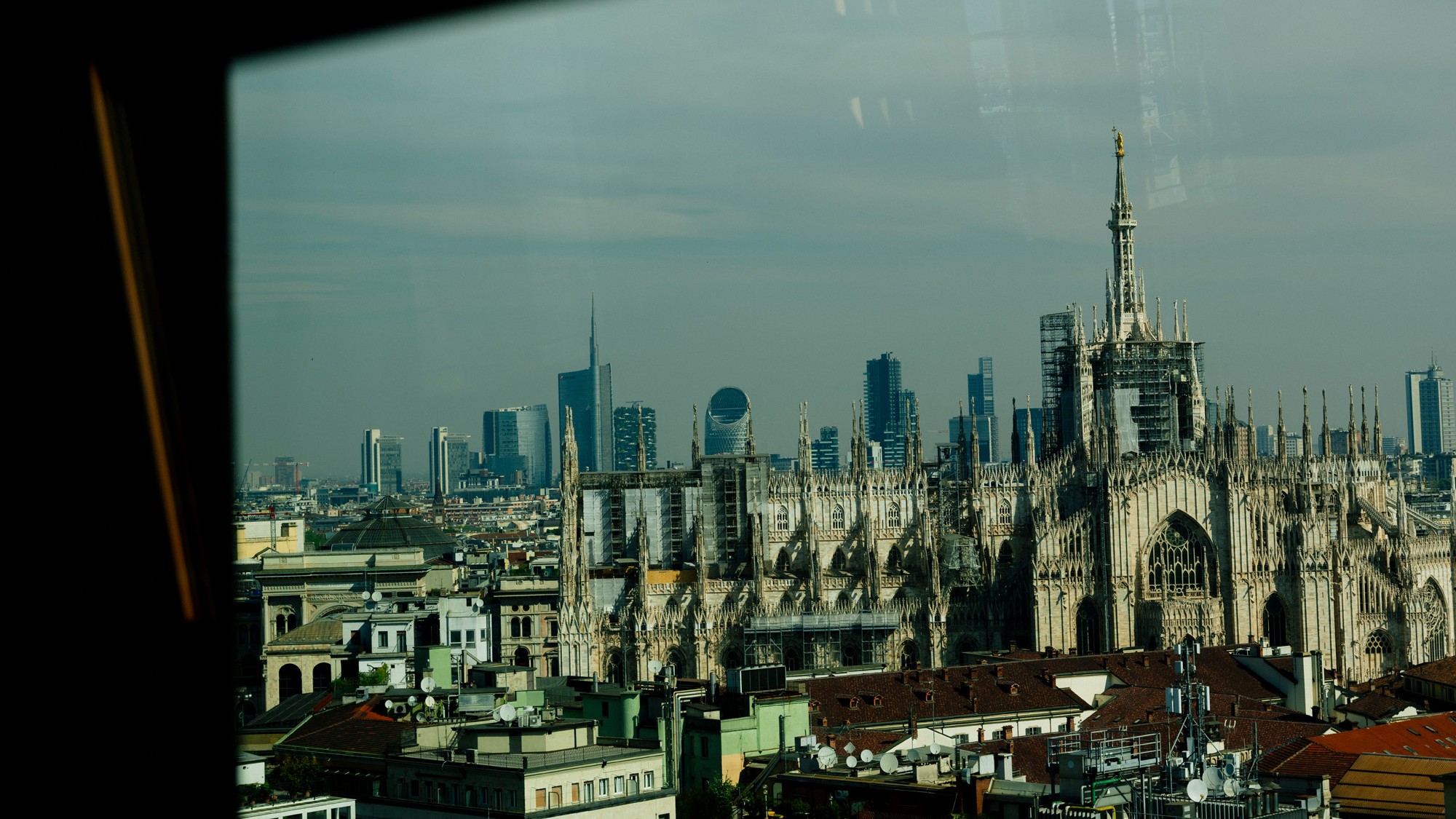 O Milano! Design's epic annual spectacle in photos
O Milano! Design's epic annual spectacle in photosCall us biased, but we believe that Milan Design Week is, at this moment in time, the greatest show on earth
-
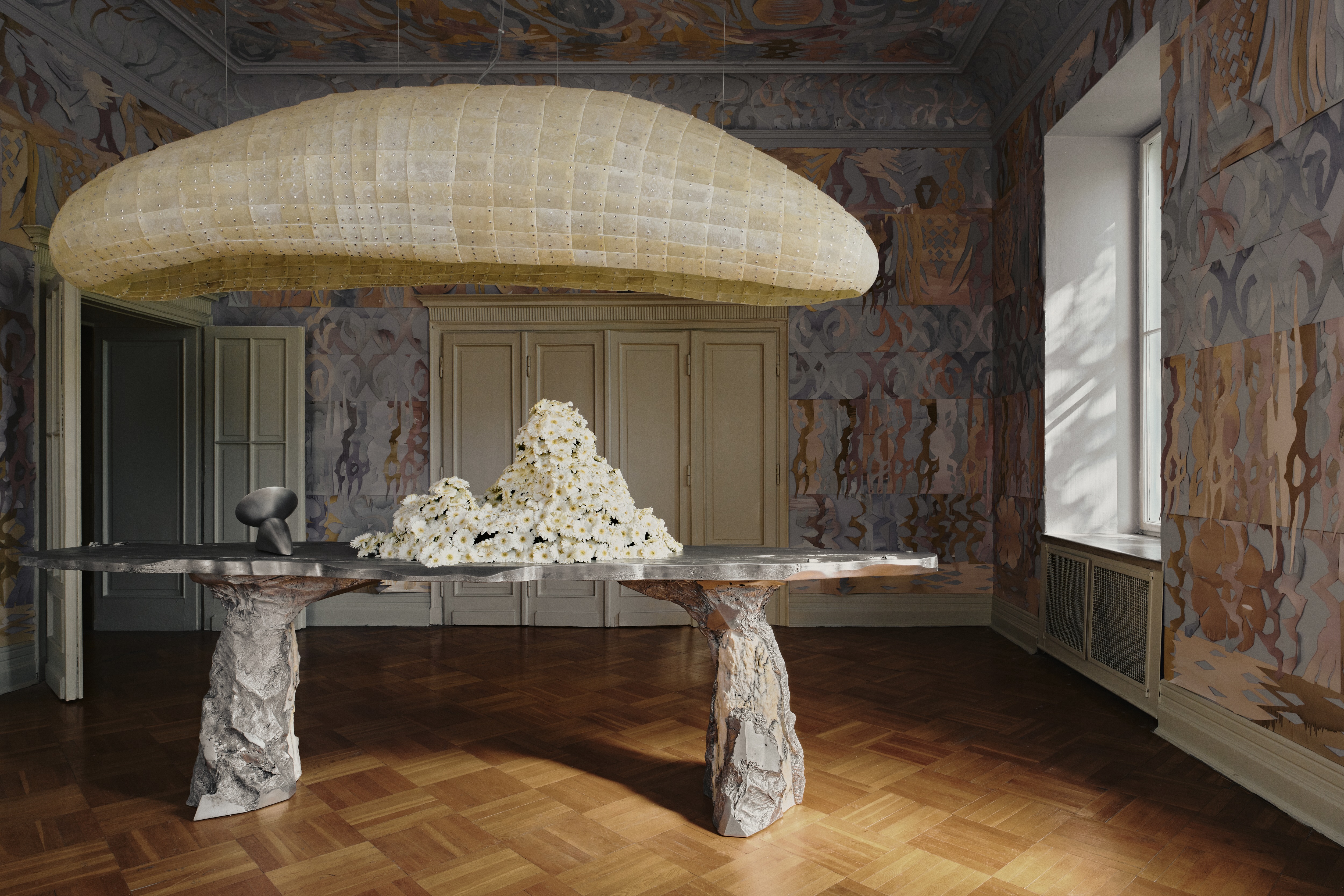 ‘Romantic brutalism’ rethinks Polish craft
‘Romantic brutalism’ rethinks Polish craftAn exhibition in Warsaw gives local makers their due, looking inside the burgeoning world of Polish design
-
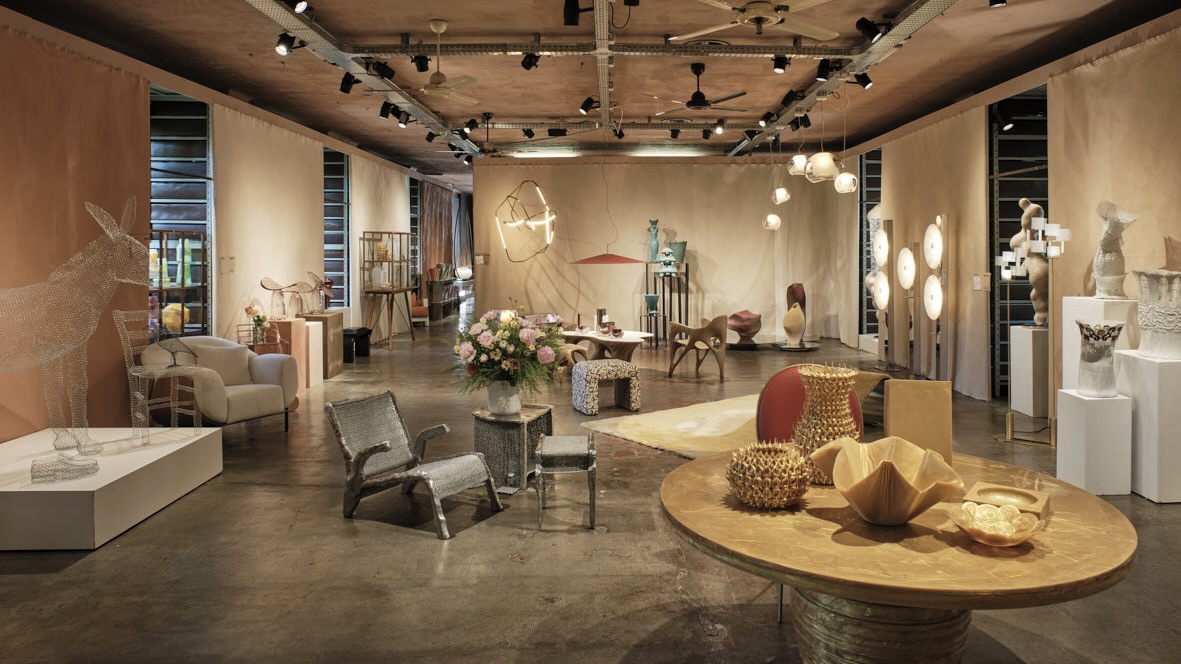 Eight designers to know from Rossana Orlandi Gallery’s Milan Design Week 2025 exhibition
Eight designers to know from Rossana Orlandi Gallery’s Milan Design Week 2025 exhibitionWallpaper’s highlights from the mega-exhibition at Rossana Orlandi Gallery include some of the most compelling names in design today
-
 Bentley’s new home collections bring the ‘potency’ of its cars to Milan Design Week
Bentley’s new home collections bring the ‘potency’ of its cars to Milan Design WeekNew furniture, accessories and picnic pieces from Bentley Home take cues from the bold lines and smooth curves of Bentley Motors
-
 StoneX partners with Wallpaper* for material alchemy at Milan Design Week and beyond
StoneX partners with Wallpaper* for material alchemy at Milan Design Week and beyondThe natural stone purveyor teams up with Wallpaper* for a three-year partnership of material adventures, starting with an exhibition at Triennale di Milano